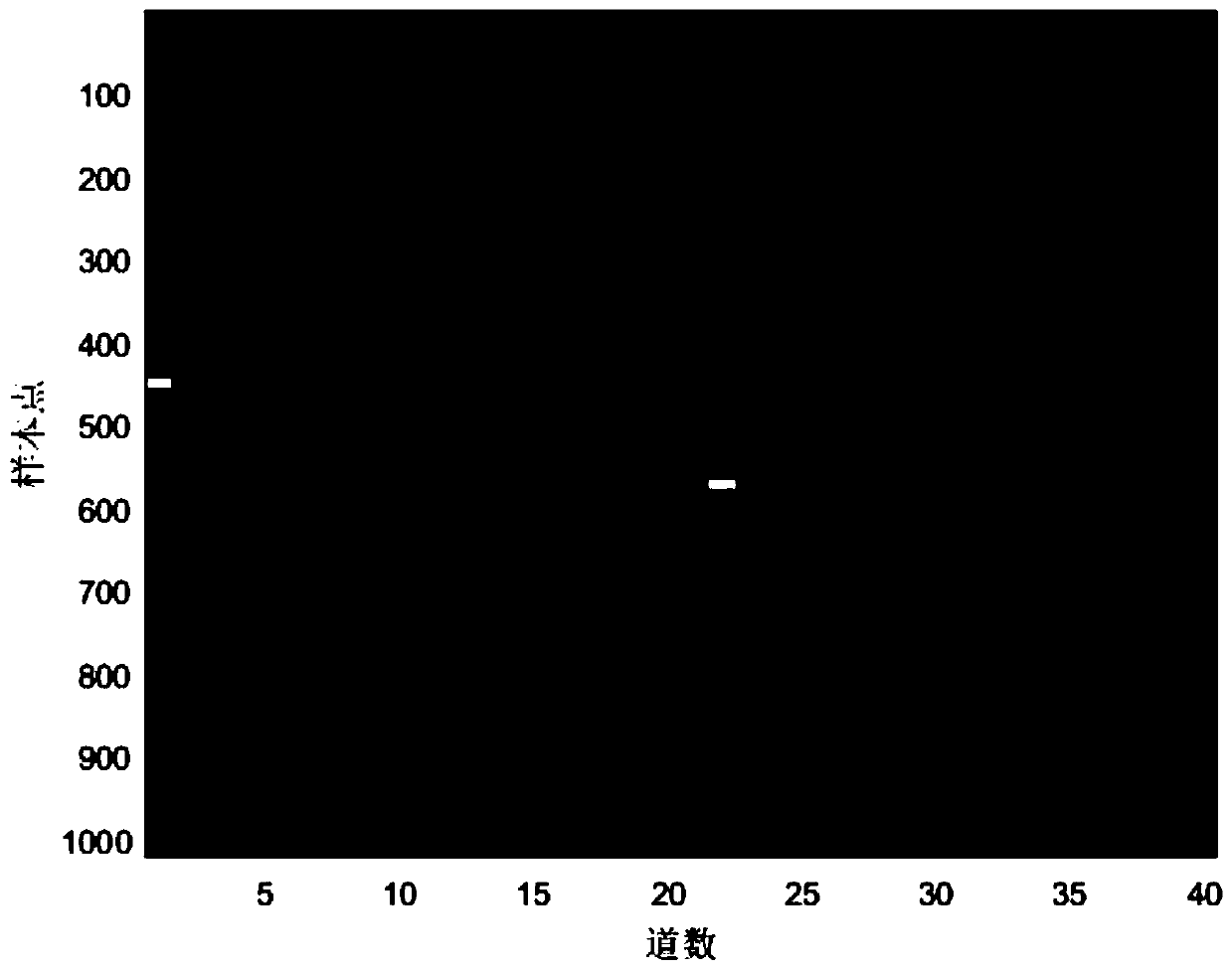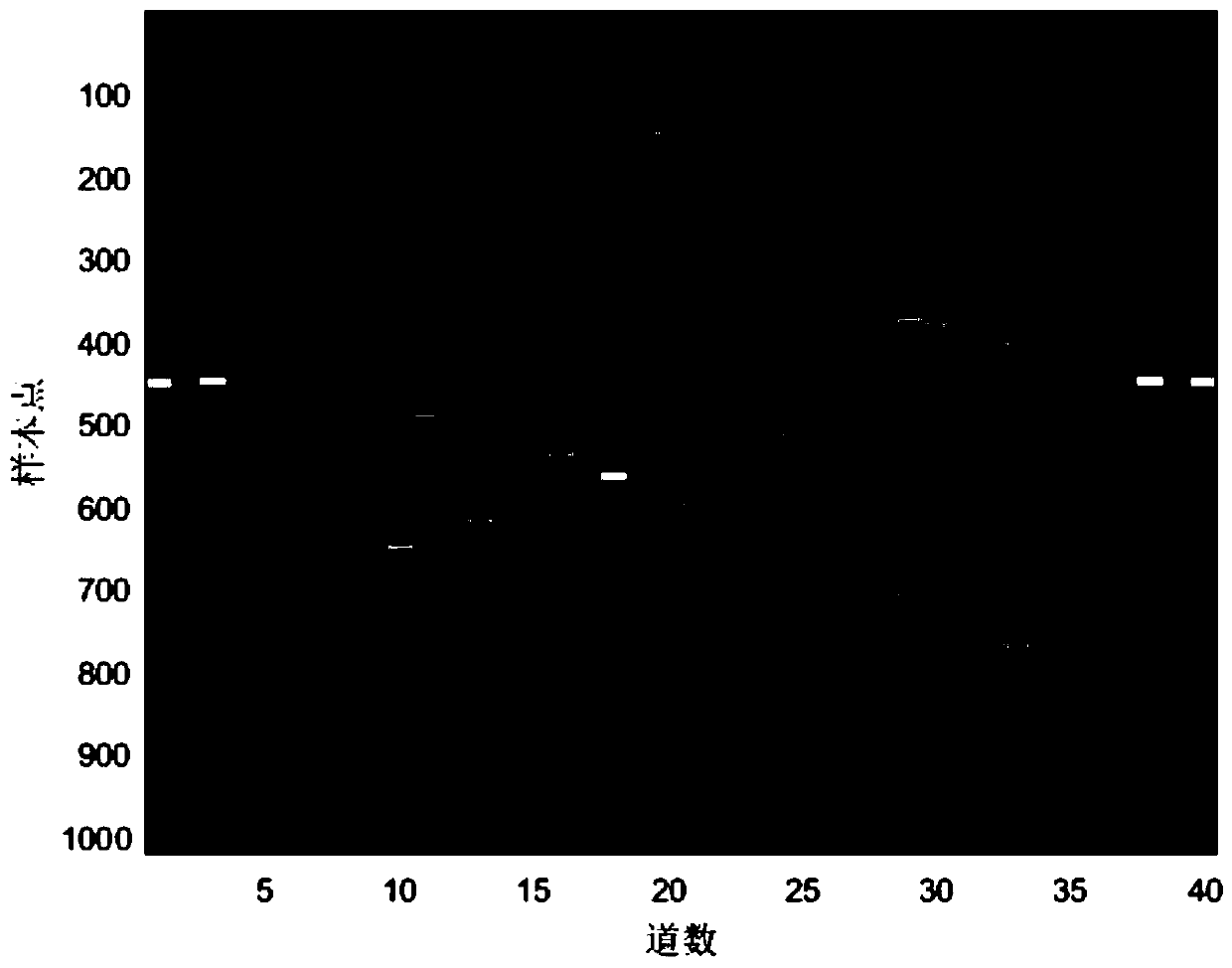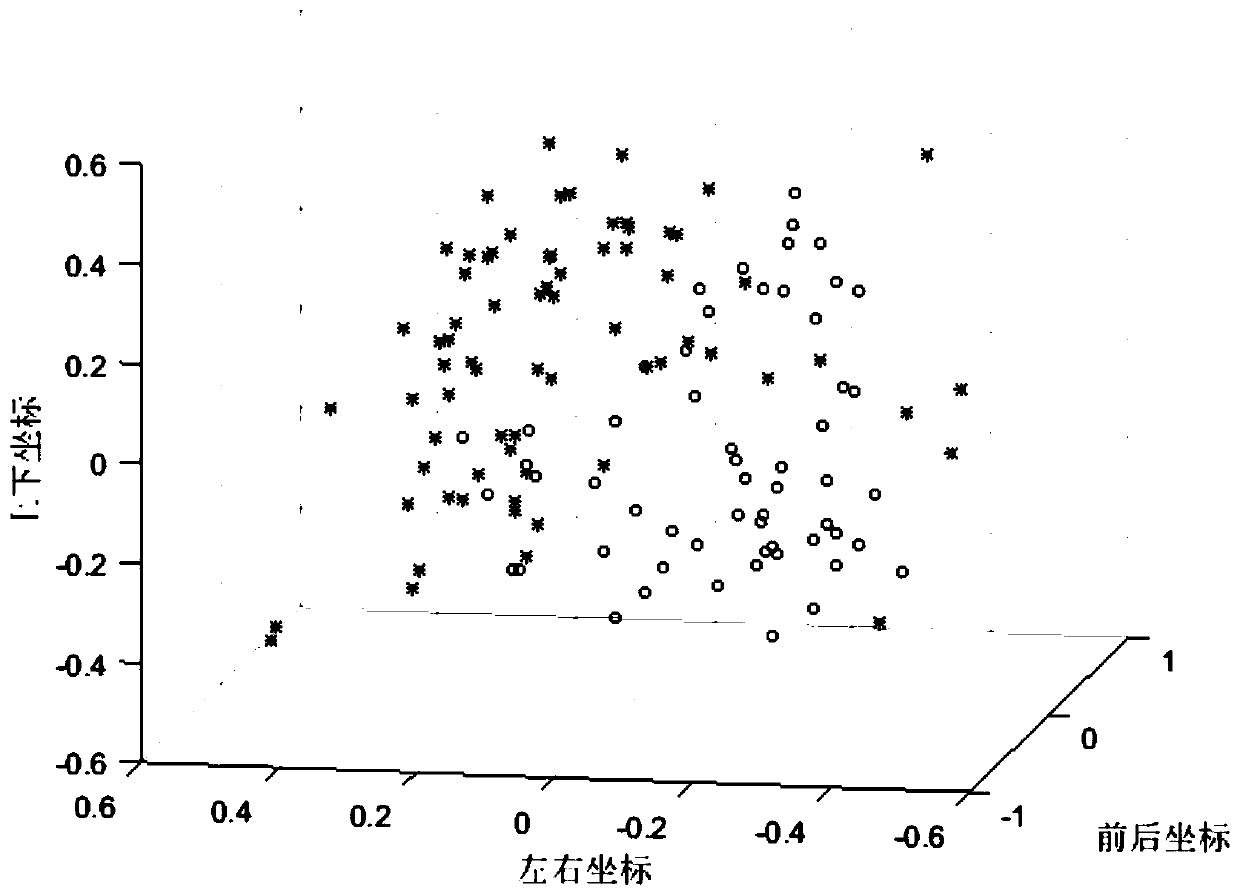Desert complex noise suppression method based on manifold partitioned 2D-VMD
A 2D-VMD, noise suppression technology, applied in measurement devices, instruments, scientific instruments, etc., can solve the problem of inability to achieve effective suppression of low-frequency noise and effective signal recovery, and achieve the effect of effective suppression
- Summary
- Abstract
- Description
- Claims
- Application Information
AI Technical Summary
Problems solved by technology
Method used
Image
Examples
experiment example 1
[0082] Experimental Example 1 Synthetic Seismic Records
[0083] The simulation generates a synthetic seismic record with 80 traces and 2048 sampling points in each trace. The sampling frequency is 1000 Hz, and some actual desert noise is added to it. The resulting noisy record is shown in Fig. 3(a). There are five seismic events in this noisy record, all of which have a dominant frequency of 20 Hz. EMD, one-dimensional VMD and the method of the present invention are used to denoise them respectively, and the denoising results are shown in Fig. 3(b), 3(c) and 3(d). From the multi-channel results of the three methods, it can be seen that after the EMD method denoises, part of the noise has been effectively suppressed, but there are still many noises remaining. The denoising effect of one-dimensional VMD method is better than that of EMD method, but the noise suppression effect of some seismic traces is not very good. In contrast, after processing by the method of the present ...
experiment example 2
[0085] Experimental Example 2 Actual Seismic Records
[0086] In order to verify the practical application effect of the present invention, the method is applied to some actual field seismic data in Fig. 5(a), which comes from the Tarim Desert in China. The seismic section contains 216 traces, each with 2250 sample points, and the sampling frequency is 1000 Hz. There are large fluctuations in the noisy records, and the changes in the shape of the event are all caused by low-frequency noise. The noise-containing record is denoised by using the EMD method, the one-dimensional VMD method and the method of the present invention, and the results are shown in Figures 5(b), 5(c) and 5(d). In order to facilitate the observation of the denoising effect, we circled three representative areas, in which area A is the noise part before the first arrival, and the low-frequency noise in area B and area C caused large fluctuations in the event.
[0087] From the denoising results, it can be ...
PUM
 Login to View More
Login to View More Abstract
Description
Claims
Application Information
 Login to View More
Login to View More - R&D
- Intellectual Property
- Life Sciences
- Materials
- Tech Scout
- Unparalleled Data Quality
- Higher Quality Content
- 60% Fewer Hallucinations
Browse by: Latest US Patents, China's latest patents, Technical Efficacy Thesaurus, Application Domain, Technology Topic, Popular Technical Reports.
© 2025 PatSnap. All rights reserved.Legal|Privacy policy|Modern Slavery Act Transparency Statement|Sitemap|About US| Contact US: help@patsnap.com



